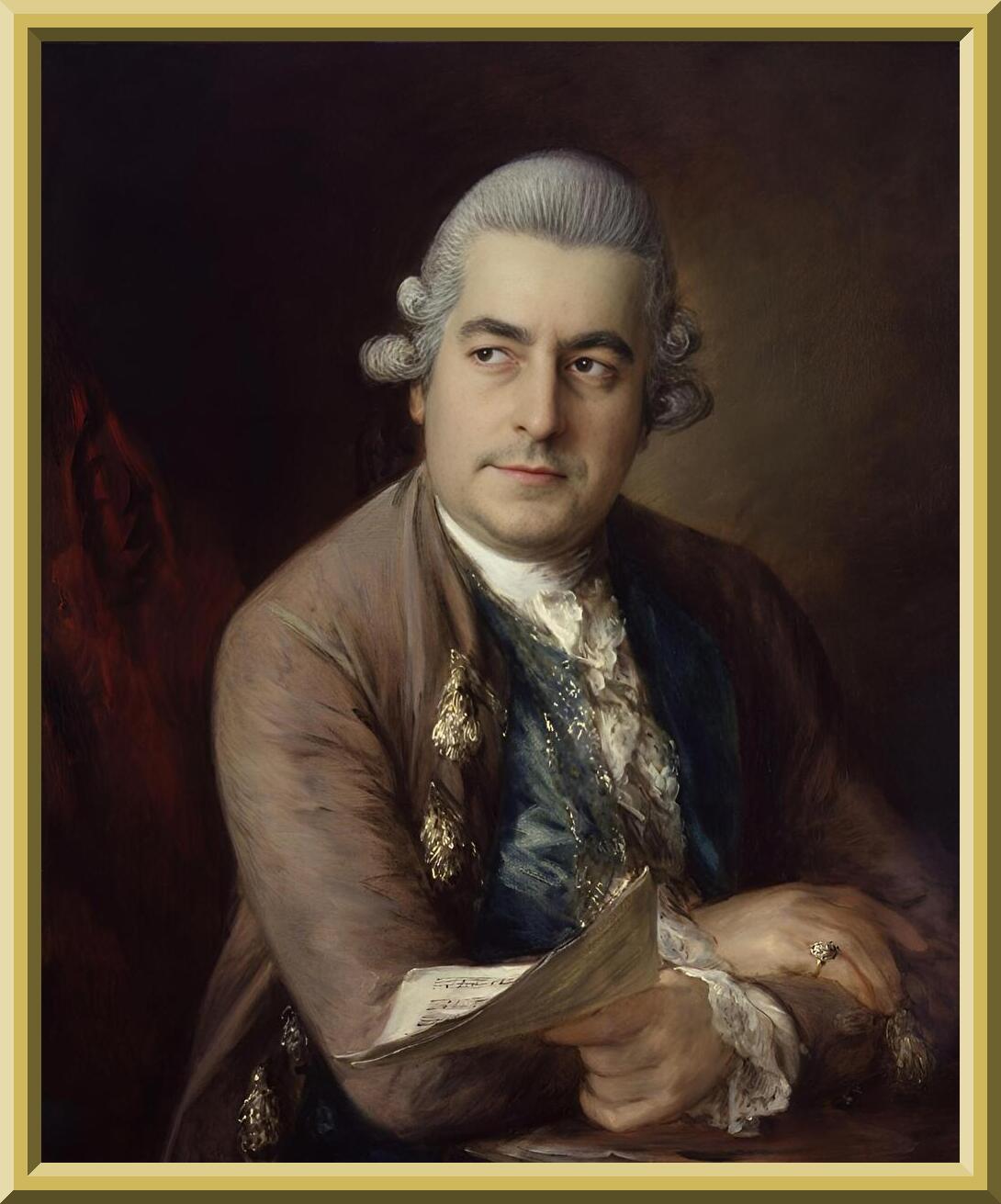Christian Bach
Johann Christian Bach, the youngest son of Johann Sebastian Bach, was born in Leipzig in 1732. He was the only exception among the Bach family musicians to achieve success abroad, and even became an opera composer, leaving behind more than 50 works. In 1764, he met eight-age Mozart in London. And along with Haydn, he was a tremendous influence on Mozart. If you look at Mozart’s works in detail, you will find that passages by Christian Bach are used here and there. For example, the theme of the second movement of the Op. 6 G minor symphony is similar to the first movement of Mozart’s C minor piano concerto. The cadenza used in the second movement of the Op. 3 C major symphony is exactly the same as the cadenza of the second movement of the D major flute quartet. Another example is the melody of the Op. 6 D major symphony, which has a melody similar to the “Hallelujah” melody.
The “Bach-Abel Concerts”, a series of regular concerts in London with his fellow countryman Karl Friedrich Abel, became a popular form of entertainment for the public at the time. The venue for these concerts was the “Hanover Square Rooms”. One group that has performed many of Christian Bach’s works is “The Hanover Band” (conducted by Anthony Halstead). It seems that they are currently recording all of his works except for his operas. Among them is Op. 5, a collection of sonatas for clavier, of which the second movement of No. 6 in C minor is written in an elaborate fugue, a piece that strongly suggests that he is in the blood of the great Bach. Also, the last movement of the sixth of his Op. 1 clavier concertos uses the theme from the British national anthem “God Save the Queen (King)”. #baroque #bach #片山俊幸


